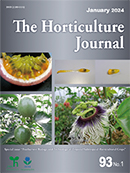Volume 93, Issue 1
Displaying 1-11 of 11 articles from this issue
- |<
- <
- 1
- >
- >|
SPECIAL ISSUE: ORIGINAL ARTICLES
-
Article type: Original Articles
2024Volume 93Issue 1 Pages 1-5
Published: 2024
Released on J-STAGE: January 27, 2024
Advance online publication: October 11, 2023Download PDF (635K) Full view HTML -
Article type: Original Articles
2024Volume 93Issue 1 Pages 6-14
Published: 2024
Released on J-STAGE: January 27, 2024
Advance online publication: November 02, 2023Download PDF (1267K) Full view HTML -
Article type: Original Articles
2024Volume 93Issue 1 Pages 15-22
Published: 2024
Released on J-STAGE: January 27, 2024
Advance online publication: November 02, 2023Download PDF (693K) Full view HTML -
Article type: Original Articles
2024Volume 93Issue 1 Pages 23-32
Published: 2024
Released on J-STAGE: January 27, 2024
Advance online publication: November 28, 2023Download PDF (2292K) Full view HTML
ORIGINAL ARTICLES
-
Article type: Original Articles
2024Volume 93Issue 1 Pages 33-41
Published: 2024
Released on J-STAGE: January 27, 2024
Advance online publication: October 14, 2023Download PDF (5188K) Full view HTML -
Article type: Original Articles
2024Volume 93Issue 1 Pages 42-48
Published: 2024
Released on J-STAGE: January 27, 2024
Advance online publication: October 31, 2023Download PDF (1699K) Full view HTML -
Article type: Original Articles
2024Volume 93Issue 1 Pages 49-57
Published: 2024
Released on J-STAGE: January 27, 2024
Advance online publication: October 17, 2023Download PDF (1793K) Full view HTML -
Article type: Original Articles
2024Volume 93Issue 1 Pages 58-67
Published: 2024
Released on J-STAGE: January 27, 2024
Advance online publication: October 18, 2023Download PDF (1541K) Full view HTML -
Optimization of Pollen Germination Medium and Pollen Collection in Two Japanese Strawberry CultivarsArticle type: Original Articles
2024Volume 93Issue 1 Pages 68-75
Published: 2024
Released on J-STAGE: January 27, 2024
Advance online publication: November 28, 2023Download PDF (425K) Full view HTML -
Article type: Original Articles
2024Volume 93Issue 1 Pages 76-88
Published: 2024
Released on J-STAGE: January 27, 2024
Advance online publication: October 14, 2023Download PDF (581K) Full view HTML
ERRATUM
-
Article type: Erratum
2024Volume 93Issue 1 Pages 89
Published: 2024
Released on J-STAGE: January 27, 2024
Download PDF (232K) Full view HTML
- |<
- <
- 1
- >
- >|
